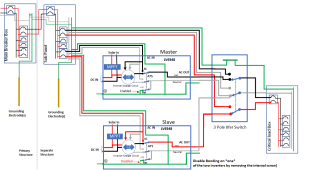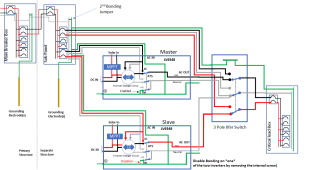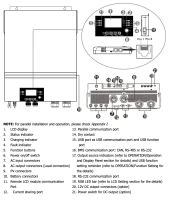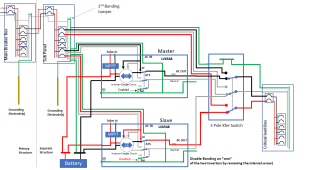FilterGuy
Solar Engineering Consultant - EG4 and Consumers
Being in a separate structure with a sub-panel does not really change the diagram muchI am setting up the same 2 lv6548 system with the transfer switch also,
I have a question on the ac in wiring/grnding
my inverters etc are in a separate building about 100 ft from the main panel
This outbuilding is serviced by a triplex 3 wire , into a 125 panel with a grounding rod
my plan for ac in was to use a 60 amp breaker from the subpanel in the outbuilding to the inverters
can I run a 4 wire setup with ecg from this sub panel to the inverters ?
or, if not
can I run a separate ecg from the main panel 100 ft away to the inverters and use the other 3 wires from the subpanel to inverters ?
or... what would you suggest ?
thanks

Notice that the sub-panel does *not* have an NG bond.
As an aside: The grounding electrode(s) at the separate structure is proper to meet the NEC, but I am not sure why it is required.... and I do know some potential problems with the extra grounding electrodes. The best explanation I can come up with is that if there is a nearby lightning strike that causes a potential difference across the earth's surface, they don't want to have that potential difference show up between the metal of the structure and the EGC system. This could potentially give someone a really bad shock if they were touching both when the strike happens. However, the trade-off is that there will be a huge spike in the EGC system that could damage equipment.






